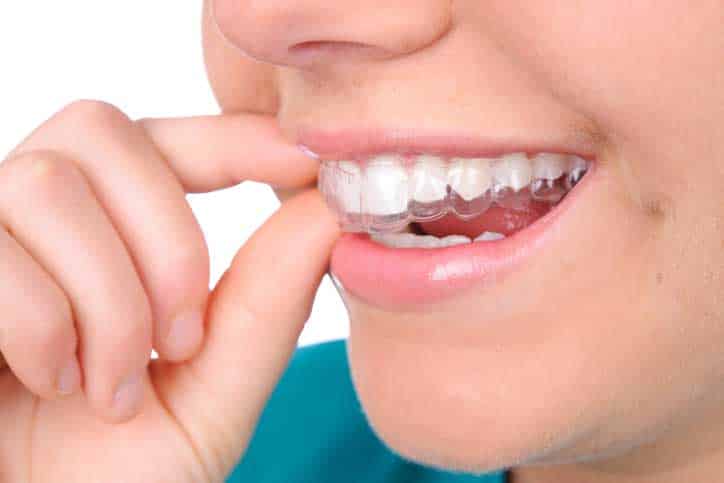Invisalign and other clear braces products have revolutionized the field of orthodontics. Many teens and adults are drawn to invisible braces because they are less apparent than metal braces. That doesn’t necessarily make them “better” though, and they may not be the best choice for your smile. Let’s compare Invisalign vs. braces to determine which path is right for you.
Invisalign Is Less Noticeable Than Traditional Braces
Invisible braces consist of sets of clear trays that are distinctly molded to your smile. The trays need to be worn for 22 hours per day, but they are not noticeable in the mouth. Some clients have a slight lisp when they first get Invisalign because they aren’t used to the extra layer in their mouth. This goes away quickly, and most say clear braces are worth the transition.
Metal braces, by comparison, have mounts and wires that are noticeable when you smile. There are ways to reduce how noticeable they are, like using white bands to hold down the wires. Nevertheless, you aren’t going to get the same natural-looking smile that you’d have with Invisalign.
Invisible Braces Have Treatment Limitations
Invisalign cannot treat everything that braces can treat. For instance, if you have a tooth that is raised above the rest of your teeth, invisible braces may not be able to correct that alignment. If a crooked tooth is turned more than 20 degrees out of place, it’s going to require braces to correct. You might be able to wear braces for a short timeframe and then switch to Invisalign, but it’s important to note the limitations of clear braces.
Cost of Invisalign vs. Braces
Invisalign typically costs less than braces and requires less time, but that is because invisible braces don’t address all the oral issues braces can tackle. If you do an apples-to-apples comparison, the cost difference between the two isn’t that extreme. Also keep in mind that insurance coverage may vary between Invisalign and metal braces. Learn more: How Much Do Braces Cost?
Do I Need Orthodontist Appointments for Invisalign?
Whether you get Invisalign or metal braces, you’re going to have orthodontist appointments. The orthodontist needs to verify that your treatment is working the way it’s supposed to. If there are any issues, like loose brackets or unexpected tooth movement, the orthodontist can correct them and get you back on track. You’ll likely see your orthodontist every 4-6 weeks, regardless of your care plan.
Comfort, Convenience and Maintenance
Most clients will say that invisible braces are more comfortable and easier to maintain than metal braces. It can be tricky to brush and floss with metal braces, especially when food gets caught between the wires. With Invisalign, you simply remove the trays and brush like normal.
When it comes to convenience, that could go either way. Some people say it’s convenient to take out the clear trays to eat, while others like the fact that metal braces do not come off. You do not have to worry if you’ve had them out for too long or remember to put them back in at the end of a meal.
Parents may prefer metal braces for their child if they do not think he or she is mature enough to wear Invisalign all day long. Then again, some parents may fear that their child may not brush and floss properly with traditional braces. We’ll weigh out all these concerns to find the right plan for your child.
Find the Right Orthodontics Treatment for Your Unique Needs
There are many factors that determine which orthodontics treatment is right for you or your child. It doesn’t matter if Invisalign is better than braces. What matters is which option is better for you. That’s what we aim to find during each orthodontics consultation.
Dr. Sadikoff will evaluate all of the circumstances to determine if clear aligners or braces are the best fit for the situation. To schedule an appointment or learn more about our orthodontics services, contact Clinton Dental Center at (586) 949-5363.











